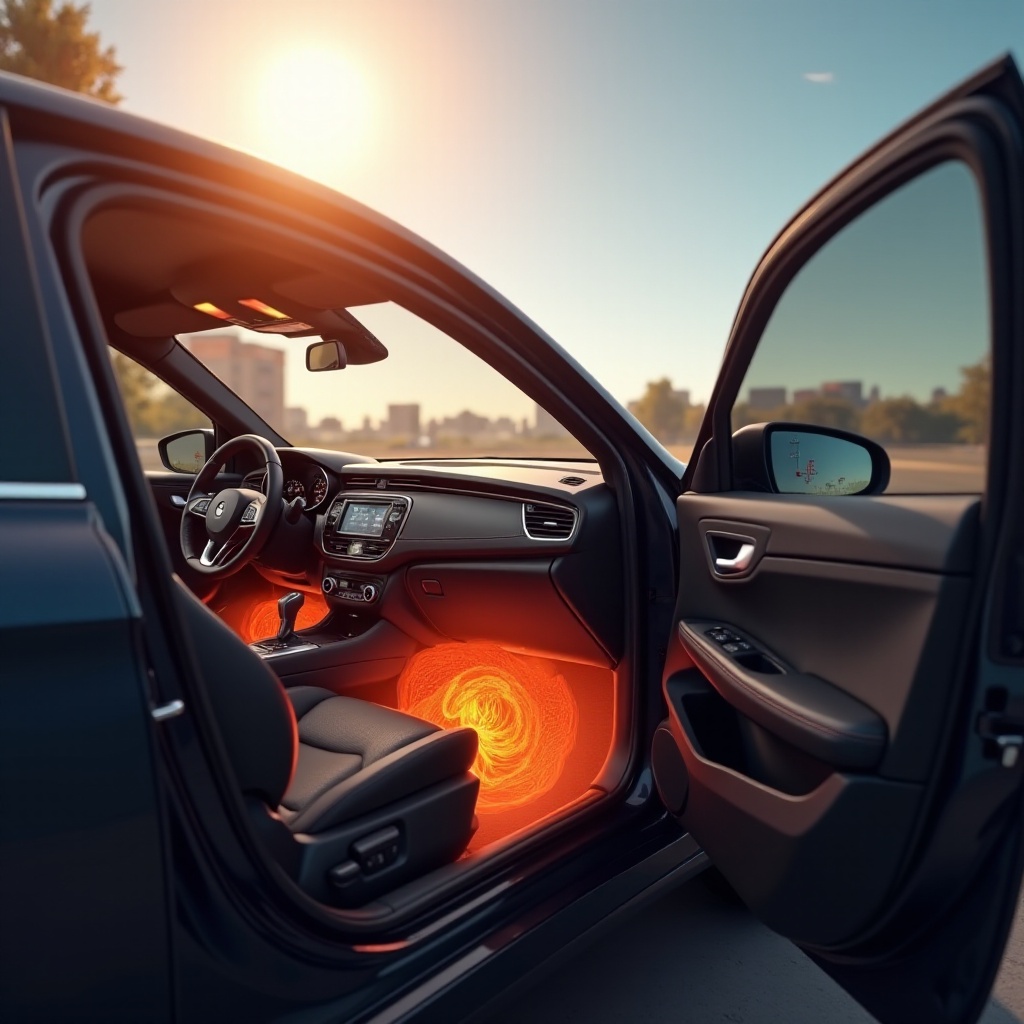Understanding Cabin Overheat Protection
Cabin overheat protection is a feature primarily found in new energy vehicles (NEVs) that helps regulate the temperature inside your car. It automatically activates the air conditioning if interior temperatures rise above a certain level. This ensures the car’s cabin does not become excessively hot, protecting both passengers and interior components.
This innovative feature can provide numerous benefits, especially in hot climates where cars can quickly heat up when parked outside. Its implementation in NEVs is a testament to how technology is being used to enhance vehicle comfort and safety.

How Cabin Overheat Protection Works in New Energy Vehicles
In NEVs, cabin overheat protection is often more advanced than similar features in traditional vehicles. It leverages modern technology such as sensors and automated systems. When the vehicle is parked, these sensors monitor the internal temperature. Once a pre-set threshold is reached—typically around 105 degrees Fahrenheit (40 degrees Celsius)—the system activates the vehicle’s air conditioning.
This process helps to keep the overall temperature down, making the vehicle safer and more comfortable to enter even after it’s been parked in the sun. More advanced systems can also utilize solar panels to power the cooling system, thus reducing reliance on the vehicle’s main battery.
Benefits of Using Cabin Overheat Protection
Enhanced Passenger Comfort
One of the primary benefits of using cabin overheat protection is drastically improved comfort for passengers. Imagine returning to your car after a long shopping trip to find it cool and pleasant rather than a stifling hotbox. This feature ensures that the vehicle is always maintained at a comfortable temperature, making it more convenient for daily use.
Protection of Interior Components
Excess heat can cause significant wear and tear on a vehicle’s interior components. Prolonged exposure to high temperatures can damage upholstery, dashboards, and electronic systems. With cabin overheat protection, these components are safeguarded against extreme heat, thereby extending their lifespan and maintaining the vehicle’s aesthetic and functional quality.
Energy Efficiency
While it may seem counterintuitive, using cabin overheat protection can contribute to overall energy efficiency. By keeping the cabin cooler, the system reduces the load on the air conditioning when you start driving, potentially saving energy that would be used for cooling a significantly overheated space.
Improved Safety
Safety is another critical aspect. High cabin temperatures can quickly become hazardous, especially for pets and children inadvertently left in a car. Cabin overheat protection systems offer an extra layer of security, ensuring the cabin temperature remains within safe limits.
Potential Drawbacks and Considerations
While the benefits are significant, it’s also important to consider some potential drawbacks when deciding whether or not to use cabin overheat protection.
Impact on Battery Usage
One downside to consider is the impact on battery usage. Cabin overheat protection systems draw power from the vehicle’s battery. This can reduce the overall range of the vehicle, which is particularly important for electric cars where range anxiety is a concern.
Additional Costs
There can be additional costs involved. Upgrading a vehicle to include this feature or opting for models that have it can be more expensive. For some, the convenience and protection may well be worth the added cost, but it’s a factor to consider based on your budget and priorities.
Maintenance Requirements
Like any other vehicle feature, cabin overheat protection systems require maintenance. Sensors and cooling systems need regular checks to ensure they are functioning correctly, which could mean more frequent visits to the service center.

Comparative Analysis with Traditional Vehicles
Cabin Overheating in Traditional Vehicles
In traditional vehicles, dealing with cabin overheating typically involves rolling down windows or blasting the air conditioning at full power. These methods can be inefficient and do not offer a preventive approach. Traditional vehicles usually lack the automated systems that monitor and regulate cabin temperature while the vehicle is parked, making the handling of overheating reactive rather than proactive.
Innovations in New Energy Vehicles
New energy vehicles, on the other hand, are leveraging advanced technologies to offer a more proactive stance on temperature control. The integration of cabin overheat protection showcases how NEVs are designed with not only energy efficiency and performance in mind but also passenger comfort and safety. This innovation is unique to NEVs and reflects the broader trend towards smarter, more responsive vehicle features.
Real-Life Scenarios and Case Studies
Consider a scenario in a city with hot summers where a family owns an electric SUV equipped with cabin overheat protection. Every time they park their vehicle during a day out, the system ensures the car’s interior remains cool. Reports from users demonstrate that their children are more comfortable, and the interior experiences less wear and tear from the sun. The system’s energy usage from the battery is minimal when compared to the convenience and comfort it offers.
Expert Opinions and User Reviews
Experts agree that cabin overheat protection is a valuable feature, particularly for those living in warmer climates. Automotive specialists highlight the benefit of preserving vehicle interiors and enhancing passenger safety and comfort. User reviews generally praise the system for its convenience, though some express concern about the battery usage. Overall, the consensus is positive, with the majority of users appreciating the added comfort and safety.

Conclusion
Cabin overheat protection is a feature worth considering, especially for those in hot climates or with high vehicle usage. It offers numerous benefits related to comfort, safety, and maintenance of your vehicle’s interior. While there are costs and energy considerations, the advantages often outweigh the drawbacks for many users.
Frequently Asked Questions
Is cabin overheat protection necessary for all climates?
Not necessarily. It’s most beneficial in warmer climates where high temperatures frequently occur.
How does cabin overheat protection affect battery life?
It can slightly reduce battery range since it uses power to operate the cooling system, but this varies by vehicle and usage.
Are there alternatives to cabin overheat protection?
Yes, options include window shades or using remote start systems to cool down the vehicle before entry.
